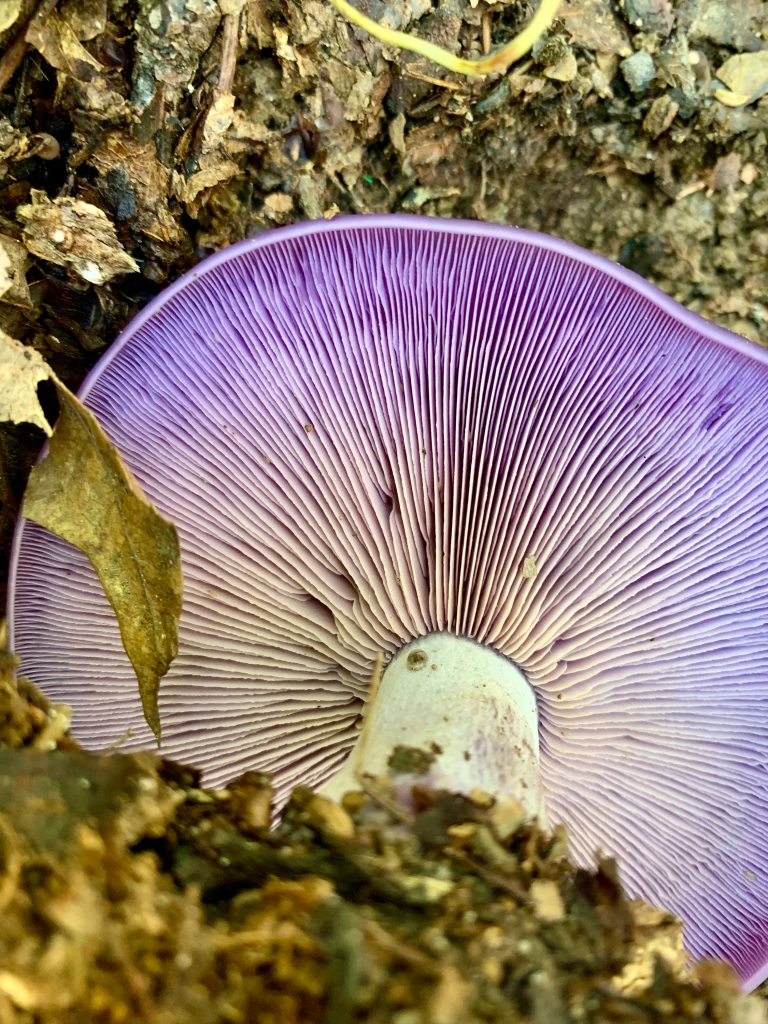Clitocybe nuda or Lepista nuda
I’m a sucker for uniquely colored mushrooms, so finding purple mushrooms is especially fun for me. The Wood Blewit fits the bill!
Young wood blewits are often blue-ish in color; field guides describe the color as purplish-blue/violet or lavender. The color may fade to mauve or tan over time.
The substantial cap is in-rolled when young, giving it the classic mushroom shape. As the cap matures, it will flatten out and even get wavy. Overall, these mushrooms have a stocky build, a solid, ringless stem with a slightly bulbous base; tight, very crowded gills that are attached to the stem; and no veil.
Found growing in hardwood leaf litter, you might immediately notice the mushroom is attached to decaying leaves when you pull it up. Dig around in the nearby leaves and you will probably find webs of mycelium growing through the duff. Wood blewits are beneficial decomposers in the forest.
To fully distinguish a wood blewit from a similar-looking, non-edible species, a blewit spore print will reveal light-colored spores that may look white to pinkish-beige on white paper.

This edible mushroom is usually found in fall (cool weather), often in small groups or fairy rings.
Warning: Cortinarius mushrooms, which are poisonous, are also purple, so look for their unique features as you try to correctly identify a wood blewit. The Cortinarius mushrooms may have any of these characteristics: a slimy, wetter cap, brown webbing under the cap when young (a “cortina”), a rusty brown ring on the stem, and dark, rusty brown spores. Having said that, these features may or may not be present, so be extremely cautious if your goal is to consume these. Never eat wild mushrooms unless you are an expert.













Gloria,
Again, love your great photography. The purple of this mushroom is remarkable. We need to get an updated photo of you too so folks can see how much your hair has grown. Anne
Lovely! It’s nice to hear that this is edible, but I think the only mushroom that I would have the courage to eat if I found it in the wild would be a morel. For this one, I’d be too worried about getting it wrong.
Thank you for this primer on the wood blewit mushroom. I’ve never seen a purple-lavender mushroom before, not that we have any growing in Central Washington — to dry a climate. Western Washington, perhaps. Your head photo of the underside makes me think of a ballerina’s full-skirted tutu such as worn in romantic ballets like Swan Lake. In other words, much too pretty to eat!